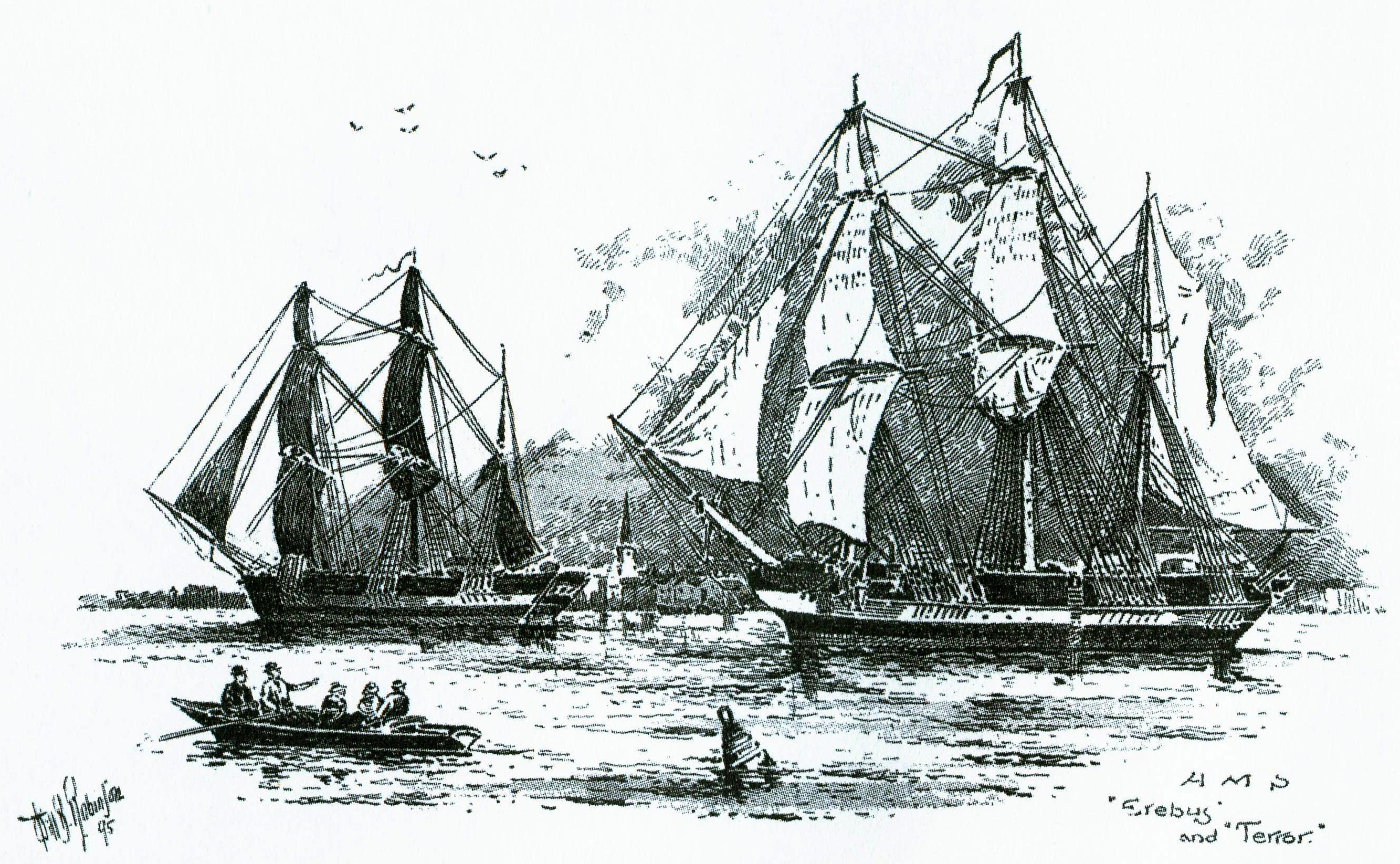
Franklin Expedition, 1845
In 1845 the Franklin Expedition disembarked from coastal England in search of the Northwest Passage, but instead of achieving this goal, the voyage became the source of one of history’s most enduring stories that would continue to spark interest over 150 years later.
This summer Parks Canada has announced its intention to continue its search for the wrecks of the HMS Erebus and HMS Terror – the two lost ships of the Franklin Expedition – that it began in 2008.
In 1845, the Franklin Expedition, led by Sir John Franklin, set sail with a crew of 128 men and three years worth of provisions in the hopes of finding a Northwest Passage. After three years without news from the expedition, and at the behest of the British public, including Franklin’s wife, Lady Jane Franklin, the Royal Navy launched a rescue party in search of the missing explorers. In addition to the navy’s official parties, a number of other rescue parties set out, spurred on by interest and concern, as well as the promise of a £20,000 reward. By 1850, the first traces of the ill fated voyage were found off the coast of Beechey Island in the Eastern Arctic. Searchers found the remnants of a winter camp, along with the graves of three sailors. Still, the search for survivors or answers continued, and by 1854 explorer John Rae had collected the most conclusive proof of the expedition’s demise by gathering information form the local Inuit who told him of a large group of starving white men, as well as stories of cannibalism. The Inuit had also collected a number of artefacts from the expedition that were subsequently passed on to Rae. Rae transmitted these stories back to England and while his evidence was accepted, he was vilified by Lady Jane Franklin and her supporters for daring to suggest that British sailors could have taken part in actions as grim as cannibalism.
In 1857, Lady Jane Franklin commissioned a second expedition that located handwritten messages left by the Franklin crew under a pile of rocks. These messages reported that during the expedition both the Erebus and Terror had been locked in ice for over a year and a half and that twenty-four men had died during this time, including Sir John Franklin. Running out of provisions, the remaining crew members abandoned ship and began to trek south. No man survived this journey.
Ironically enough, while Franklin has been credited by some of his countrymen with finding the Northwest Passage, in truth, it was actually the various search parties that did far more to map the landscape of Canada’s Arctic.
In the 1980s interest in the Franklin Expedition was renewed and new technologies were used on discovered human remains to determine that the crew had likely died from a number of causes that may have included pneumonia, scurvy, tuberculosis, and lead poisoning, caused either by lead in the tinned food or in the ship’s water filtration system. Theories of cannibalism were also confirmed by examining blade cuts found on human bones. Despite these findings, the Terror and Erebus remain lost at sea. It is this mystery, along with the fate of the Investigator, a rescue ship that sank while trying to locate the Franklin Expedition that archaeologists working for Parks Canada hope to solve by using the latest in sonar technology alongside the oral traditions provided by the area’s Inuit.
While a historical mystery underscores this government funded venture, its timing is also no accident. This expedition comes at a time that Canada is reasserting its claims over the Far North. As global warming causes Arctic waterways to open up, there is increased interest within Canada, and globally, about the materials, including vast amounts of oil and minerals that may lie underneath these waters. In the years ahead this changing landscape will continue to be the cause of international interest and competing agendas of national governments, businesses and environmentalists. With this in mind the Canadian Government is reasserting its sovereignty in the area and investing heavily to chart these waters.

Update – Yesterday (Tuesday, July 28) Parks Canada located HMS Investigator
Here is a link to the story: http://www.cbc.ca/technology/story/2010/07/28/hms-investigator-arctic.html